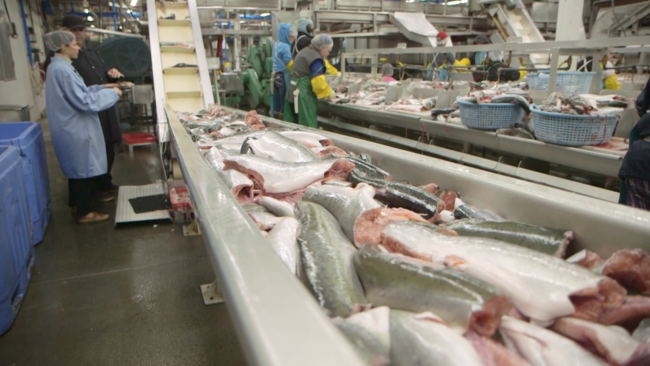
The United States released a list of Chinese goods Friday worth $50 billion on which it will place 25 percent tariffs. Shortly afterward, China announced reciprocal tariffs on U.S. goods, including Alaska seafood.
Garett Evridge, an economist with the McDowell Group, who specializes in the seafood industry, explained that the tariff on seafood is likely to be far reaching.
“Our initial review of this is indicates that really all salmon species, pollock, ground fish, herring, really across the board for Alaska seafood products, in addition to lobster and other products used throughout the U.S., it looks like the announcement indicates that tariff would be 25 percent on product, including Alaska seafood products,” said Evridge.
Both U.S. and Chinese tariffs will reportedly take effect July 6. Evridge said it is too early to know what this will mean for the seafood market.
“There’s a whole other side of this with diplomacy and strategy on the side of China and the U.S. that we’re not really aware of,” Evridge said. “But in the event that this actually occurs, it will certainly be a challenge to the industry, and it will impact processors, communities, fishermen just because a 25 percent tariff means an increase in cost.”
One thing is clear, however. China plays a major role Alaska’s seafood industry, so the tariffs would affect a significant portion of the market.
“In 2017, Alaska exported about 1.1 million metric tons of seafood to countries around the globe,” Evridge said. “Of this total, China accounted for a little bit less than half of that. In terms of salmon, exports of Alaska salmon to China account for about 40 percent of our total salmon exports. And over the last five years or so, about one in three salmon that has been exported from Alaska has gone to China.”
These tariffs would be added to already existing tariffs on Alaska seafood entering China which vary from five to 15 percent, depending on species.
